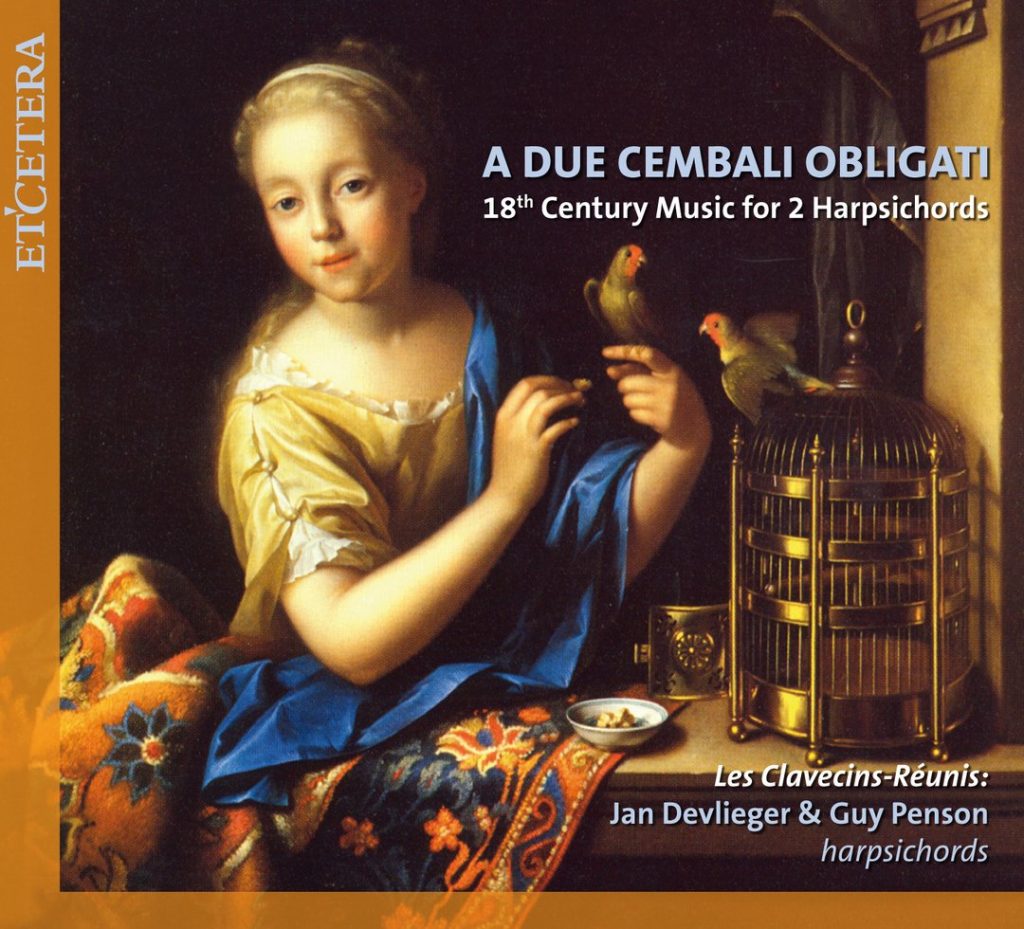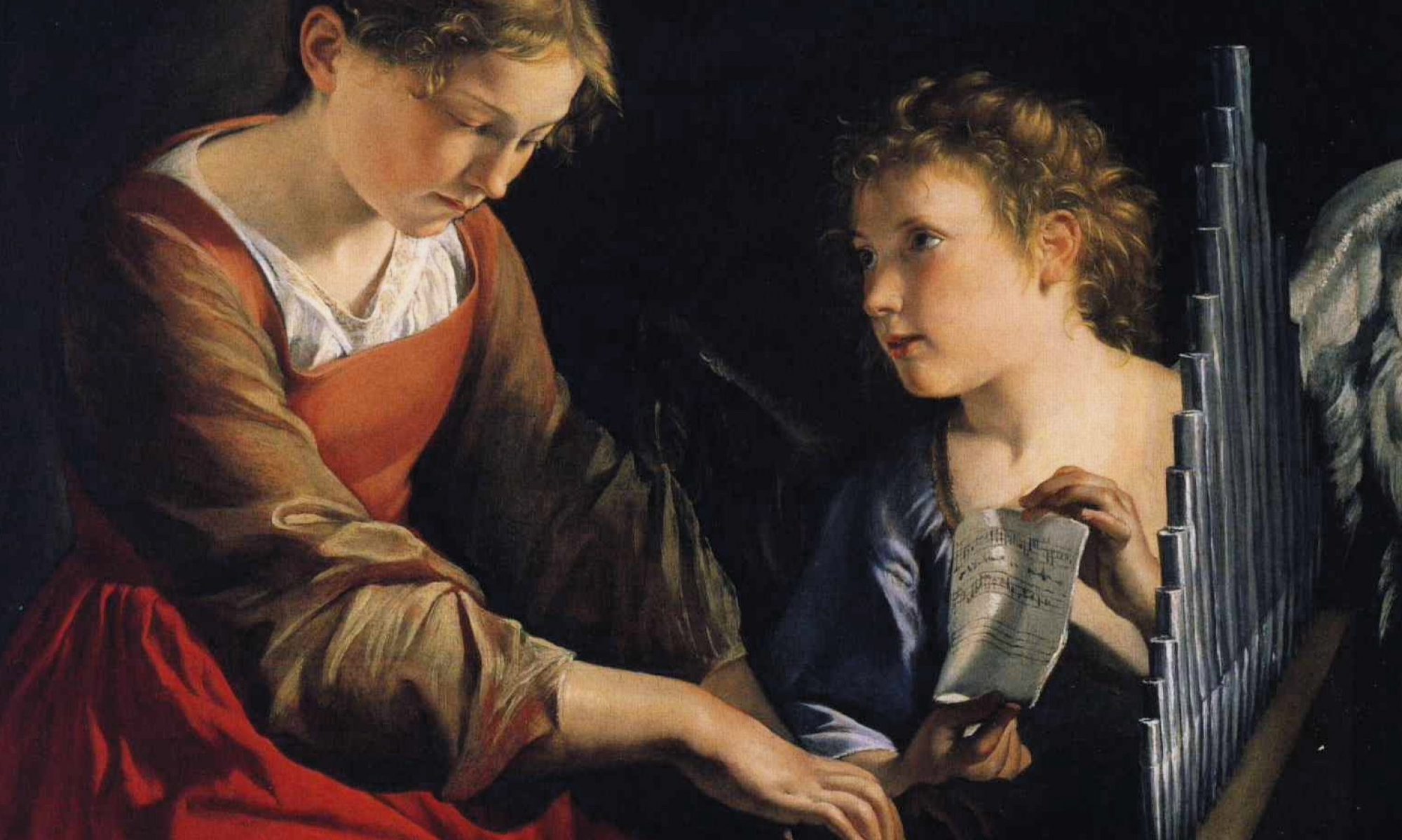A Due Cembali Obligati, Les Clavecins-Réunis, 18th Century Music for 2 Harpsichords, Guy Penson & Jan Devlieger, Etcetera KTC 1392

David Chung, Early Music, February 2011:
‘Jan Devlieger and Guy Penson join forces – their collaboration aptly labelled Les Clavecins-Réunis – to showcase a wide spectrum of styles as well as their superb ensembles and craftsmanship’
[show_more more=”MORE….” less=”HIDE”] A due cembali obligati: 18th century music for 2 harpsichords (Et’cetera ktc 1392, rec 2008, 63’) would make an attractive concert program. With a repertory of contrasting pieces by eight composers from Germany (Christoph Schraffrath, Bach and two of his sons, J. C. and C. P. E.), France (François Couperin and Gaspard Le Roux) and Spain (Antonio Soler), Jan Devlieger and Guy Penson join forces—their collaboration aptly labelled Les Clavecins-Réunis—to showcase a wide spectrum of styles as well as their superb ensembles and craftsmanship. Unlike for regular concerts, however, they have equipped themselves with six excellent instruments from various collections (modern replicas of Ruckers, Collesse and Antunes, five of them built by Chris Maene and the sixth by Andrew Wooderson). This superb collection of instruments not only allows the players to produce a greater variety of sounds than would be possible with two harpsichords alone, but also to provide a close match between music and instrument. For example, Soler’s Concerto in G major was recorded on two Portuguese keyboards; and some of the pieces are shrewdly ordered to maximize contrast, for instance by interspersing German and French music (Schraffrath–Le Roux–J. S. Bach–Couperin), and highlighting the imaginative registrations within the pieces of each work. Le Roux’s Suite in D minor is a case in point. The Menuet, which combines the lute stop with a single 8’, offers freshness after the majestic Sarabande, and the Courante luthé turns out to be the most effective, although uncommon, piece to close the suite. The two Contrapuncti by Bach that immediately follow offer a stark contrast. In the Couperin group, a stately Allemande is contrasted with La musette and its impressive build-up to the climax. Likewise, the Four Duets by C. P. E. Bach are executed with chiseled precision. I particularly enjoyed the brisk tempo of the last Allegro, and listeners may well be pleasantly surprised by how the richly sonorous Poco adagio can look so deceptively thin on paper. J. C. Bach’s Sonata in G major is delightfully interpreted with a Mozartian touch, whilst Soler’s Concerto in G major appears at just the right moment to conclude our journey with exoticism and panache. The accompanying booklet includes liner notes by Devlieger in four languages (English, French, German and Dutch), the two performers’ biographies and technical information (with pictures) on the six instruments used in the recording.
[/show_more]
Johan van Veen, Musica Dei Donum:
‘great stuff for every lover of the historical keyboard’
[show_more more=”MORE….” less=”HIDE”] In the late 18th century the playing of keyboard duets was a popular pursuit, especially in bourgeoisie circles. It was most practical to play with four hands on one keyboard, and that is the pattern followed by most keyboard duets. Very few people will have had two keyboards available, so it is assumed that where the composer opted for this the duets were mostly played in public concerts.
The first keyboard duets seem to have been composed in England in the early 17th century. In New Grove a composition by Giles Farnaby (c.1563-1640) is mentioned as the earliest piece for two keyboards. But the repertoire from the 17th century is very small. An important contribution to the genre came from Bernardo Pasquini, who published a series of 14 sonatas for two harpsichords in 1704. He gave only the bass lines which have to be worked out like a basso continuo part by the players.
Other early examples of music for two keyboards are from France. Gaspard Le Roux is a composer about whom we know very little. His ‘Pièces de clavecin’ were published as music for one harpsichord, but the composer himself stated that most pieces had their full effect only when played on two keyboards. For some pieces a complete score for a second harpsichord is included. François Couperin wrote his four books of ‘Pièces de clavecin’ also for solo harpsichord, but some pieces require a different scoring, such as harpsichord and violin or viola da gamba. Two pieces are for two harpsichords; the second played here is ‘Musette de Choisi & Taverni’ which is in the style of folk music.
In Germany Johann Sebastian Bach was one of the first to write music for two keyboards. His Concerto for two keyboards and strings in C (BWV 1061) was originally written without accompaniment. Here we hear two famous pieces which belong to his Kunst der Fuge. His sons also composed for this scoring. One of the best-known is the Concerto a due Cembali by his eldest son Wilhelm Friedemann. On this disc we get four duets by his second son, Carl Philipp Emanuel. The dynamic contrasts the composer included in these pieces point in the direction of the fortepiano, but they are also playable on harpsichords with two manuals.
These four duets reflect the style of the Empfindsamkeit, and so does the Duet in a minor by Christoph Schaffrath, who was harpsichordist at the court of Frederick the Great of Prussia, and was appointed harpsichordist to the king’s sister Amalia in 1741. The duet played here is one of the two Schaffrath wrote. The Sonata in G by Johann Christian Bach, Johann Sebastian’s youngest son, is rather different, and of a more diverting character.
The last item is from Spain. Antonio Soler was a pupil of Domenico Scarlatti and his keyboard sonatas bear the traces of his teacher’s style. Remarkable in his oeuvre are the six concertos for two organs – at least, that is what the title says. But in the liner-notes Jan Devlieger argues that the range of the keyboard parts extend beyond that of the organs of El Escorial. Here the royal family regularly resided, and it was for crown prince Gabriel Bourbon that Soler composed these concertos. They have been recorded on organs, harpsichords and even fortepianos before, and, historically at least, the former two are most plausible. The Concierto III is one of the most virtuosic, in particular the second movement. Recordings with music for two harpsichords have been made before, but on this disc the most obvious pieces have been ignored. It includes some lesser-known works instead, in particular the duets by Schaffrath and Johann Christian Bach. Of the four duets by Carl Philipp Emanuel Bach I recognized only the last. And Le Roux isn’t a household name either. So from that perspective there is every reason to welcome this disc. The performances are additional reasons to commend this recording. Jan Devlieger and Guy Penson give very fine and lively interpretations, and these have been splendidly recorded. One piece of advice: turn down the volume control of your equipment and in particular your headphones, otherwise you could damage your ears (or annoy the neighbours), as the volume of the recording is very high. There is a strong division between the two channels in this recording: one harpsichord on the left, the other on the right. With this kind of repertoire that is absolutely right. Another merit of this disc is the use of three different pairs of harpsichords: two Flemish single manual instruments after Ruckers with ‘ravelment’ (an extension of the instrument according to the fashion of the 18th century), two double-manual French harpsichords after Collesse, and two single manual Portuguese instruments after Antunes.
In short: great stuff for every lover of the historical keyboard.
[/show_more]
